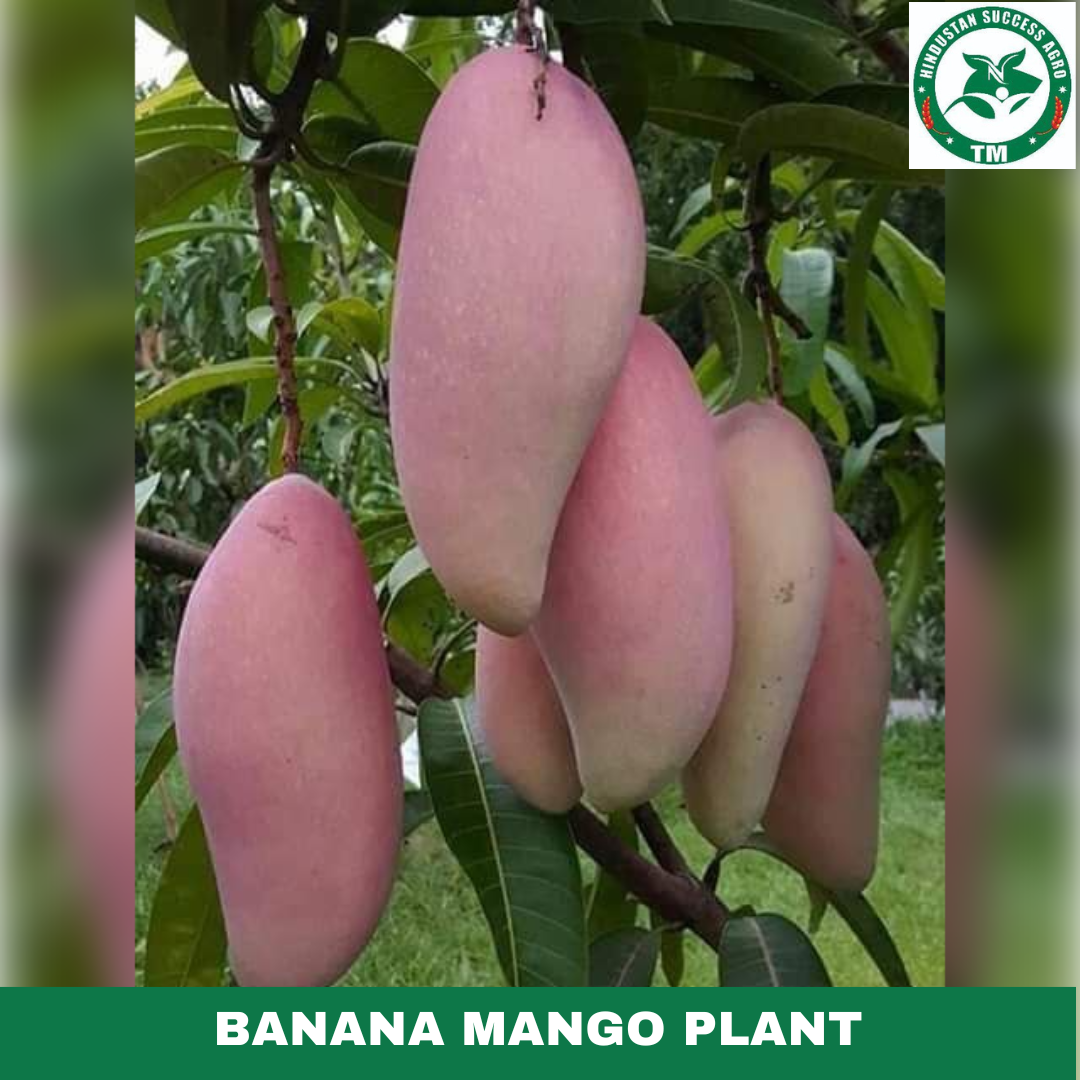Banana Mango Plants
Banana mangoes, also known as Kesar mangoes in some regions, are a popular variety known for their distinctive flavor and characteristics. Here’s a detailed look at banana mango plants:
1. Origin and Characteristics:
- Origin: The term "banana mango" is sometimes used to refer to varieties like Kesar mangoes or other types that have a banana-like aroma or shape. Kesar mangoes, often associated with this name, are originally from India, particularly Gujarat.
- Fruit Characteristics: Banana mangoes are medium to large-sized fruits with a bright yellow or orange skin when ripe. The flesh is smooth, fiberless, and very sweet with a slight banana-like aroma. The fruit is known for its rich flavor and juiciness.
2. Growing Conditions:
- Climate: Banana mango plants thrive in tropical and subtropical climates. They need warm temperatures and are sensitive to frost.
- Soil: These plants prefer well-drained soil rich in organic matter. Sandy loam or loamy soil with a slightly acidic to neutral pH (6.0 to 7.5) is ideal.
- Watering: Regular watering is necessary, especially during the dry season and fruiting period. Mature trees are somewhat drought-tolerant, but it's important to avoid waterlogging.
- Sunlight: Full sun exposure is crucial for healthy growth and fruit production. Banana mango plants need at least 6-8 hours of direct sunlight daily.
3. Planting and Care:
- Planting: The best time to plant banana mango trees is during the monsoon season or just before the rainy season. Prepare the planting hole to be twice as wide and deep as the root ball, and enrich the soil with compost or well-rotted manure.
- Spacing: Space the trees about 15 to 20 feet apart to allow for proper growth and airflow, which helps reduce the risk of diseases.
- Fertilization: Apply balanced fertilizers regularly during the growing season. Organic matter such as compost or well-rotted manure can also be used to enhance soil fertility.
- Pruning: Prune the trees to remove dead or diseased branches and to shape the tree. Proper pruning improves air circulation, sunlight penetration, and fruit quality.
4. Pests and Diseases:
- Pests: Banana mango plants can be affected by pests such as mango hoppers, mealybugs, aphids, and fruit flies. Regular monitoring and appropriate pest control measures, including organic or chemical treatments, can help manage these pests.
- Diseases: Common diseases include anthracnose, powdery mildew, and bacterial spots. Good cultural practices, such as proper spacing and avoiding overhead watering, along with the use of fungicides, can help prevent and control these diseases.
5. Harvesting:
- Timing: Banana mangoes are typically harvested when they reach full size and the skin color changes to a deep yellow or orange. Harvesting times can vary depending on the region and local climate.
- Method: Harvest the mangoes carefully to avoid bruising or damage. Use a sharp knife or pruning shears to cut the fruit from the tree, leaving a small portion of the stem attached to prevent sap burn.

.png)
.png)
.png)
.png)

